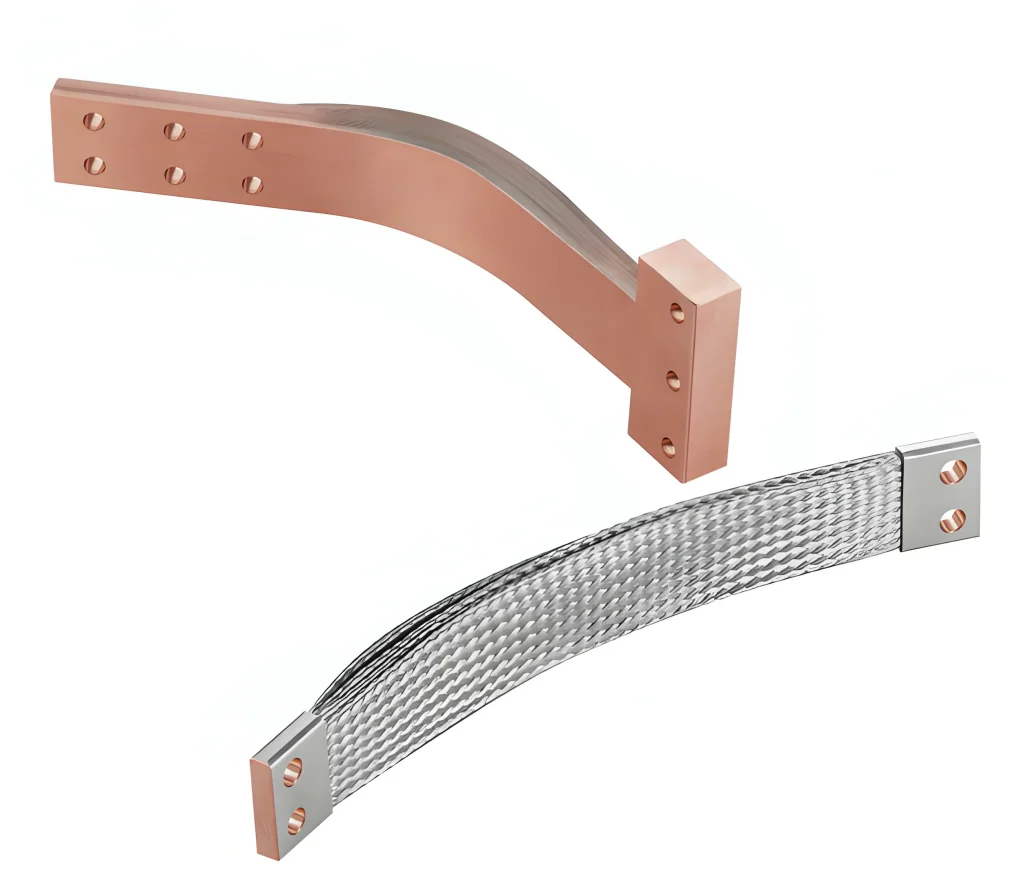1.Types of Busbar Products: Copper, Aluminum & Insulated Solutions
When selecting busbar products for your electrical systems, understanding the differences between copper busbar, aluminum busbar, and insulated busbar is essential. These busbar components are critical for safe, reliable power distribution in industrial, commercial, and data center applications. However, choosing the right material involves balancing performance, cost, and application-specific requirements. This article dives deep into the Types of Busbar Products and busbar systems, highlighting their benefits, limitations, and practical considerations to help you make an informed decision for your project.
2.Understanding the Core Types of Busbar Products
Busbars are conductive strips or bars designed to carry large electrical currents with minimal loss. They are widely used in switchgear, power distribution boards, and electrical panels. The main types of busbar materials are:
Copper Busbar
Aluminum Busbar
Insulated Busbar
Each type has unique characteristics impacting cost, electrical performance, durability, and installation complexity.
3.Copper Busbar: The Industry Standard for High Performance
Why Choose Copper Busbar?
Copper busbar products are favored for their excellent electrical conductivity, mechanical strength, and corrosion resistance. They offer lower resistance than aluminum, which means less energy loss and reduced heat generation during operation.
(1)Advantages of Copper Busbars
High conductivity: Copper has about 60% higher conductivity than aluminum, making it ideal for high current applications.
Durability: Resistant to oxidation and mechanical wear, ensuring longevity in demanding environments.
Compact design: Because copper carries more current per cross-sectional area, busbar systems can be more compact.
Thermal performance: Handles higher temperatures better, reducing risk in critical systems.
(2)Cost Considerations
Copper is typically more expensive upfront than aluminum. However, its performance benefits can justify the investment in industrial and high-load environments.
(3)Common Uses
Heavy industrial power distribution
High-current switchgear
Critical electrical panels requiring reliability
(4)Where to Order Certified Copper Busbar Products
Look for copper busbar suppliers with fast delivery and proper safety certifications to ensure quality and compliance.
4. Aluminum Busbar: Cost-Effective and Lightweight
(1)Why Consider Aluminum Busbar?
Aluminum busbar products are popular for their lighter weight and lower cost compared to copper. Although aluminum has lower electrical conductivity, it is a viable option when budget and weight constraints are priorities.
(2)Advantages of Aluminum Busbars
Cost savings: Aluminum is generally more affordable and widely available.
Lightweight: Easier handling and installation, reducing labor costs.
Corrosion resistance: Naturally forms an oxide layer protecting it from further corrosion.
(3)Limitations
Lower conductivity: Aluminum has about 60% the conductivity of copper, requiring larger cross-sectional areas for the same current.
Thermal expansion: Aluminum expands more than copper, which can impact connections.
Mechanical strength: Softer and less durable than copper.
(4)Ideal Applications
Data centers and commercial buildings with moderate electrical loads
Electrical panels where weight reduction is important
Systems where budget constraints are critical
(5)Custom Aluminum Busbar Products
Many aluminum busbar suppliers for electrical panels offer custom busbar manufacturing to fit project-specific needs, including tailored shapes and sizes.
5.Insulated Busbar: Enhancing Safety and Installation Efficiency
(1)What is Insulated Busbar?
Insulated busbar products consist of conductive copper or aluminum cores encased in a high-quality insulating material. This design prevents accidental contact, reduces the risk of short circuits, and allows closer spacing in busbar trunking systems.
(2)Benefits of Insulated Busbars
Improved electrical safety: Insulation minimizes shock hazards and electrical faults.
Space-saving: Allows tighter installation due to better protection.
Ease of installation: Reduces the need for additional protective covers.
Durability: Often rated with safety certifications for industrial use.
(3)Longevity Under Heavy Use
High-quality insulated busbar products can last decades under heavy industrial use, maintaining performance with minimal maintenance.
(4)Installation Tips
Proper training and tools are needed to install insulated busbars safely and efficiently, following manufacturer guidelines.
Where to Find Custom Insulated Busbar Solutions
Reputable custom insulated busbar solutions manufacturers provide tailored systems with full certification and support.
6.Key Factors to Consider When Choosing Busbar Materials
Selecting the right busbar involves analyzing multiple factors:
Electrical load and current rating: High currents usually favor copper.
Budget and cost constraints: Aluminum and insulated options can reduce upfront costs.
Space and weight limitations: Aluminum’s lighter weight and insulated busbar’s compact design help.
Safety requirements: Insulated busbar improves safety in confined or high-risk environments.
Environmental conditions: Outdoor or corrosive environments may require specialized coatings or materials.
Customization needs: For complex shapes or unique dimensions, custom busbar manufacturing is essential.
7.Frequently Asked Questions
(1)What are the differences between copper and aluminum busbars?
A: Copper offers higher conductivity, strength, and durability but at a higher cost and weight compared to aluminum, which is lighter and cheaper but less conductive.
(2)Which busbar type is better for high current applications?
A: Copper busbars are generally preferred for high current due to better conductivity and thermal performance.
(3)How does insulated busbar improve electrical safety?
A: It provides a protective insulating layer that prevents accidental contact and short circuits, enabling safer operation and installation.
(4)Can I customize aluminum busbar products for my project?
A: Yes, many suppliers offer custom busbar manufacturing to meet specific size and shape requirements.
(5)How long do insulated busbars last under heavy use?
A: With proper installation and maintenance, insulated busbars can last 20+ years in industrial environments.
8.Why Choose Welleshaft for Your Busbar Needs?
At Welleshaft, we specialize in precision busbar manufacturing with a full range of busbar products including copper, aluminum, and insulated options. Our certified quality and expert engineering ensure your power distribution systems perform safely and reliably.
Fast delivery from trusted copper busbar suppliers
Custom solutions tailored for your project
Compliance with industry safety standards
Expert consultation to help select the right busbar type
Don’t risk costly errors or delays caused by improper material choices. With Welleshaft’s expertise and this comprehensive guide, you can confidently specify busbar products that ensure reliable power distribution and long-term durability.

